Page 6 - BIOS
BIOS Features
We completely ran out of time to go in-depth with the BIOS. Next to that we have some pretty horrible photo's ... but hey it's something right ? Intel tried to make the Skulltrail platform interesting for overclockers, the Phoenix BIOS shows a multitude of interesting features. It by far is not an nForce 680/780 comparable and configurable platform. Though overclocking was a breeze. Let's have a peek.
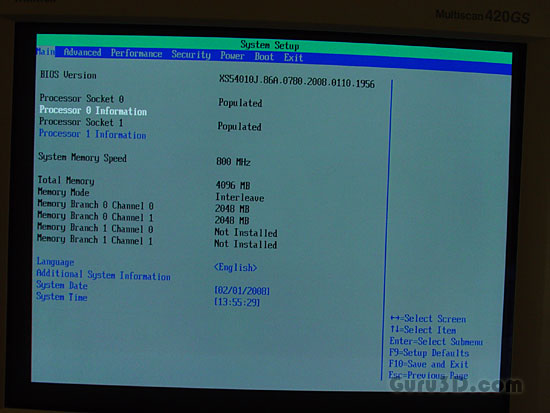
Physically the BIOS features have not changed much over the server version. The Skulltrail BIOS however will give you the ability to control quite a bit. Including a very wide range of frequencies, multipliers, and voltages so users would have more information to adjust settings manually.
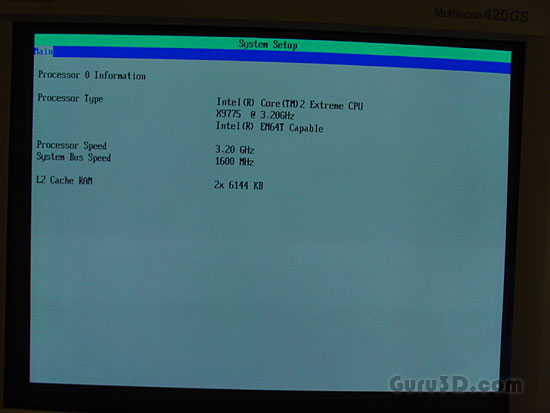
Yep ... that's one of the QX9770 processors alright.
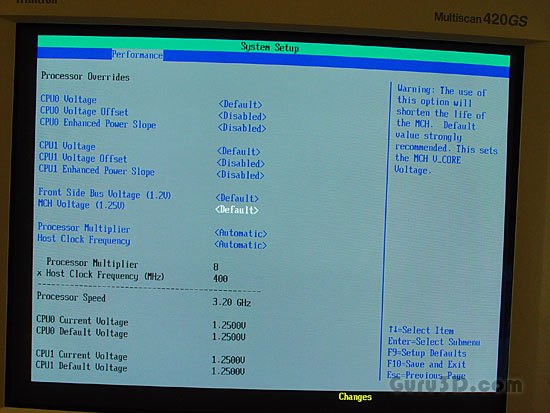
There are many features, functions, settings we can discuss. Pretty much anything you need for a good tweak can be found and set to the maximum. You can really go nuts in there from the average to the advanced user.
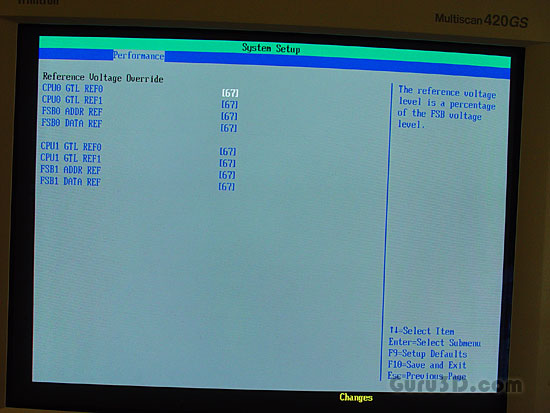
GTLVREF is used to adjust the input sample trigger point on Intel CPUS. Adjustments to this value can compensate for voltage drops that occur for some loading and traces. For example, GTLVREF can be lowered to account for voltage drops when tuning a Kentsfield CPU instead of a Conroe CPU. Kentsfield CPUs typically put more loading on key interface signals which results in the average interface voltage drop. GTLVREF is a fine tuning device that can enable higher frequency for some interfaces. A Kentsfield CPU needs two GTLVREF voltage settings; one is for the 4x signal (for FSB data transfer), and the other is for 2x/1x signal (for FSB addressing, control). Well, that's for the real freaks I guess. Next photo please.
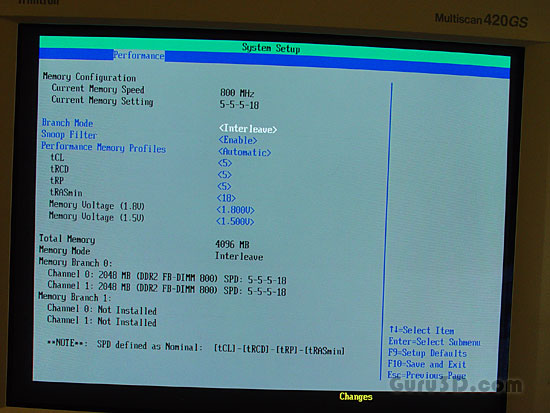
Memory times, it can detect EPP profiles (labeled Performance memory profiles); it's best to leave it at the EPP preferred configurations. You guys also know stuff about the then named SLI memory.
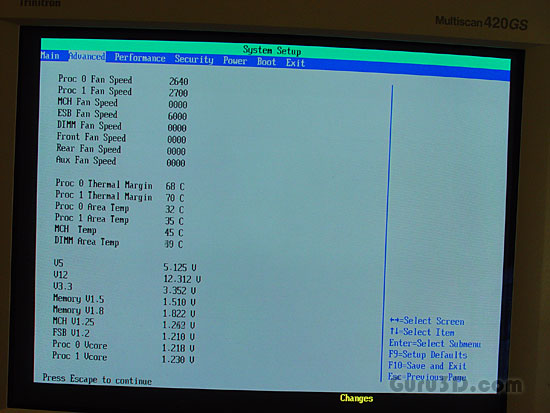
What I severely miss is the flexibility to control the active fan on the mainboard. In it's current state it is really too loud; and that makes sense. Look at that freak spinning 6000 RPM.
